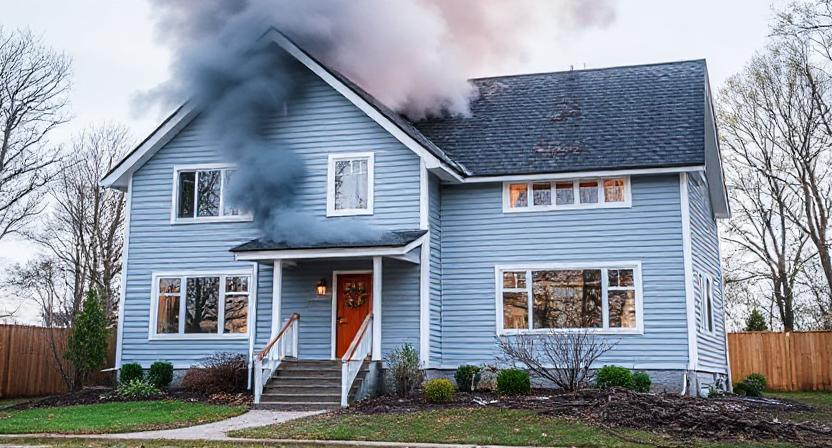When it comes to safeguarding your home from natural disasters, having the appropriate insurance coverage can make all the difference. By selecting a policy that aligns with your property’s unique vulnerabilities, you’re taking a crucial step towards protection. But, there’s more to it than just signing on the dotted line. Stay tuned to discover essential insights on how to navigate the world of insurance and fortify your home against unforeseen calamities.
Key Takeaways
- Evaluate home’s risk factors like flood or wildfire.
- Review insurance policy for coverage and exclusions.
- Choose insurer with good claims history and reputation.
- Regularly update policy for property value changes.
- Document damage after disaster for insurance claims.
Understanding Insurance Coverage Options
When it comes to protecting your home from natural disasters, understanding your insurance coverage options is crucial. Your insurance policy is your safety net in times of crisis, providing financial protection against unforeseen events like hurricanes, floods, earthquakes, and wildfires.
To ensure you have the right coverage, it’s essential to review your policy details carefully. Familiarize yourself with what’s covered and what’s not, including any specific exclusions for natural disasters. Make sure you understand the limits of your coverage and any additional endorsements or riders you may need to add for comprehensive protection.
In the event of a natural disaster, contacting your insurance provider promptly is key. Document the damage with photographs and detailed descriptions to support your claim.
Keep records of all communication with your insurer and follow their instructions for filing a claim. By having a clear understanding of your insurance coverage options and being prepared, you can navigate the aftermath of a natural disaster with greater peace of mind.
Assessing Your Home’s Risk Factors
Understanding your insurance coverage options is just the first step in safeguarding your home from natural disasters. Assessing your home’s risk factors is crucial in determining the level of protection you need.
Start by evaluating the location of your home – is it prone to flooding, wildfires, hurricanes, or earthquakes? Research the history of natural disasters in your area to gauge the potential risks accurately.
Next, consider the structural integrity of your home. Is it built to withstand severe weather conditions? Older homes may require updates to meet current safety standards.
Additionally, assess your property’s surroundings. Are there trees that could fall on your home during a storm, or is there a high risk of landslides?
Understanding these risk factors will help you tailor your insurance coverage to adequately protect your home from potential natural disasters.
Tips for Choosing the Right Insurer
To choose the right insurer for your home protection needs, start by researching different insurance companies in your area. Look for a company that specializes in home insurance and has a good reputation for handling claims promptly and fairly.
Here are some tips to help you make the right choice:
- Research and Compare: Obtain quotes from multiple insurers to compare coverage options, premiums, deductibles, and customer reviews. This will give you a better understanding of what each insurer offers and help you make an informed decision.
- Check Financial Stability: Verify the financial stability of the insurance companies you’re considering. A financially secure insurer will be more likely to fulfill their obligations in case of a natural disaster. Look for ratings from agencies like A.M. Best or Standard & Poor’s to assess their stability.
- Review Policy Exclusions: Carefully review the policy exclusions of each insurer to ensure that the coverage meets your specific needs. Make sure you understand what’s covered and what’s not, especially regarding natural disasters that are common in your area.
Importance of Regular Policy Reviews
Regular policy reviews are crucial for ensuring that your home insurance coverage adequately protects your property. It’s essential to regularly review your policy to make sure you have the right coverage for any potential natural disasters that may affect your area. Here are some key reasons why regular policy reviews are important:
| Reasons to Review Your Policy | Benefits |
|---|---|
| 1. Changes in Property Value | Ensures your coverage reflects the current value of your home. |
| 2. Updates in Home Renovations | Helps you adjust coverage based on any recent home improvements. |
| 3. Changes in Risk Factors | Allows you to update coverage based on new risks in your area. |
Steps to Take After a Disaster Strike
After a disaster strikes, your immediate priority should be ensuring the safety of yourself and your loved ones.
Once everyone is safe, it’s crucial to take the following steps:
- Assess the Damage: Survey your property carefully to determine the extent of the damage.
Take photos or videos for insurance purposes, and make notes of any important details.
This documentation will be vital when filing a claim with your insurance company.
- Contact Your Insurance Provider: Reach out to your insurance company as soon as possible to report the damage.
Provide them with all the necessary information and documentation you have gathered.
They’ll guide you on the next steps to take regarding your claim and any potential repairs.
- Secure Your Property: To prevent further damage, make temporary repairs if safe to do so.
Cover broken windows, tarp damaged roofs, and remove waterlogged items.
This will help protect your home until permanent repairs can be made.
Frequently Asked Questions
Can Insurance Cover Damages From Earthquakes and Floods?
Yes, insurance can cover damages from earthquakes and floods. It’s important to check your policy to ensure you have the right coverage. Consider adding specific endorsements or purchasing separate policies for comprehensive protection.
How Do I Know if My Home Is at Risk for Wildfires?
To know if your home is at risk for wildfires, check for proximity to wooded areas or dry vegetation. Regularly clear debris and create a defensible space. Stay informed about fire danger levels and evacuation routes.
What Factors Should I Consider When Comparing Insurers?
When comparing insurers, consider coverage options, deductibles, premiums, customer service, and ratings. Research each company’s reputation and financial stability. Choose the insurer that offers the best value and protection for your specific needs and budget.
How Often Should I Review My Insurance Policy?
You should review your insurance policy annually to ensure it aligns with your current needs. Regularly checking for updates can help you stay adequately protected and avoid any surprises during unforeseen circumstances.
How Soon Can I File a Claim After a Disaster?
You can file a claim after a disaster as soon as possible. Contact your insurance provider promptly to start the process. Make sure to document the damage for the claims adjuster and follow their instructions closely.
Conclusion
Now that you have the right insurance coverage in place to protect your home from natural disasters, you can rest assured knowing that you are prepared for any unexpected events. Remember to regularly review your policy, communicate with your insurer, and document any damage promptly to ensure a smooth claims process. By taking these proactive steps, you can safeguard your home and belongings from potential risks and have peace of mind in the face of disaster

